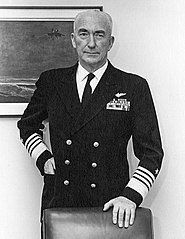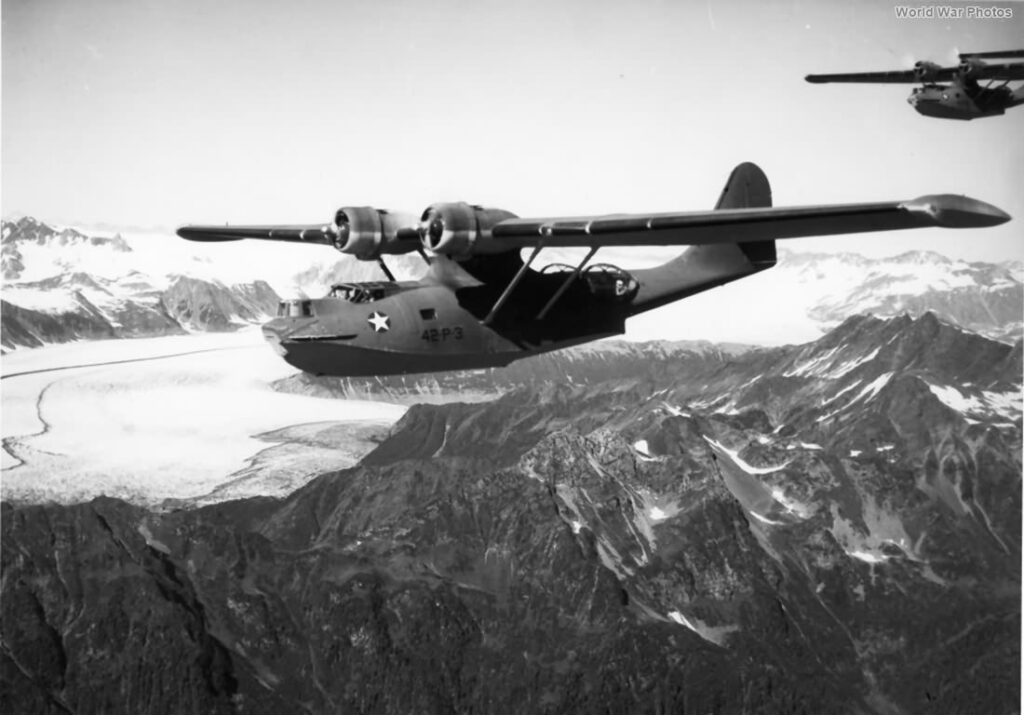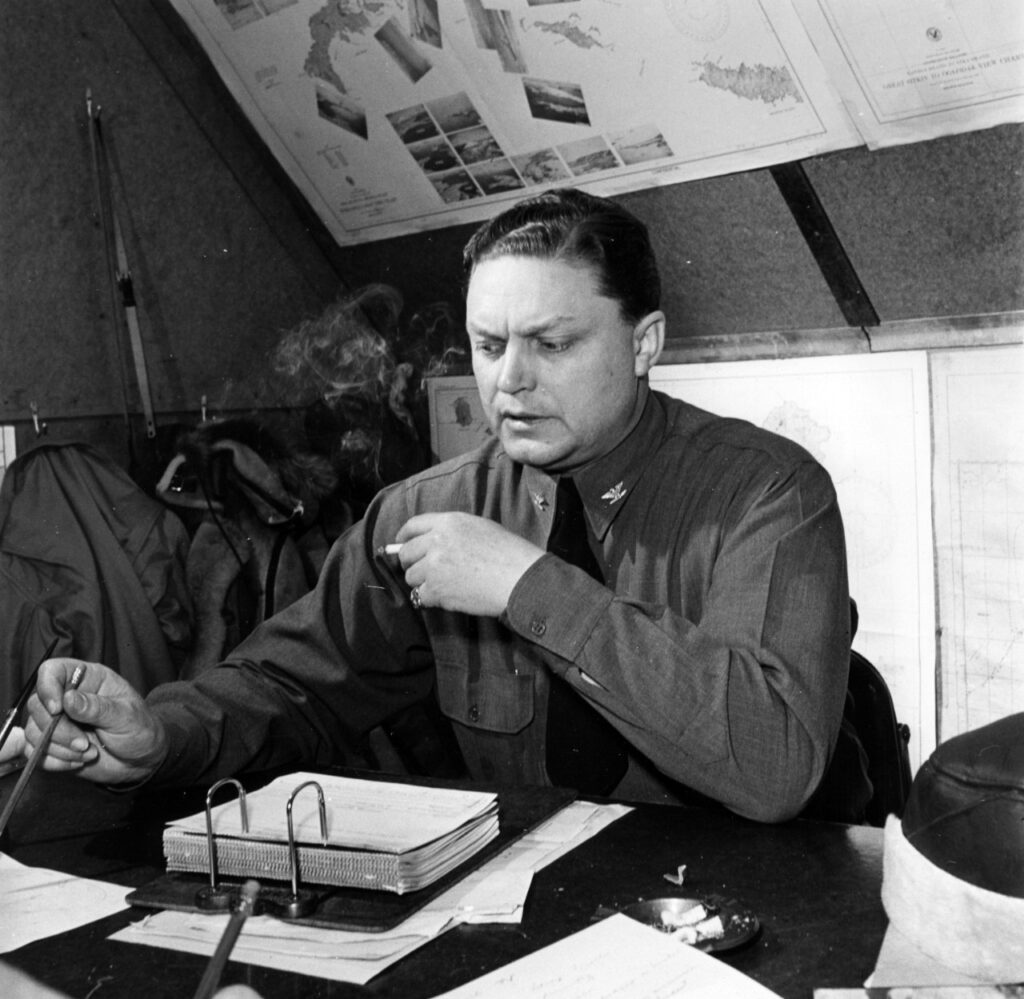James Russell’s Influences On USS Franklin

The fact is that we built 24 of those ships. They all functioned beautifully, not one of them was sunk.1–Admiral Fithugh Lee
One of the unexpected pleasures I find in studying history is stumbling upon interesting people, not usually known to the general public. I am always happy to tell their stories with the hopes others will appreciate their contributions, as well. One such person was then Lieutenant Commander James Russell, an experienced naval aviator ordered to help fit out USS Yorktown (CV-5) prior to her commissioning. Russell graduated from the Naval Academy in 1926 becoming a naval aviator in 1929. In the 1930s, he would earn a Master of Science in Aeronautical Engineering from CalTech.2 His service in World War II in the Pacific Theater of Operations (PTO) was intertwined with that of Franklin and its captain, Leslie Gehres.
I have read numerous books on Essex-class carriers, but none were specific enough to talk about who designed them. That is until I was reading Carrier Warfare In The Pacific: An Oral History Collection. Admiral James Russell had written an oral history essay about contributing to the design of the Essex class, one of which was Franklin. Of course, he was modest, understating the various bureaucratic battles he fought. Then, later in that book, I read an account by Admiral Fitzhugh Lee. Lee assisted in fitting out the first ship in the class, Essex (CV-9). He then served as its air officer through its many campaigns.
He wrote of Russell:
He was a man of great vision and ability; he had been on carriers; he knew them; he insisted on getting things done that he felt were necessary and getting them done in the face of opposition from other people who wanted other things done which would have impaired their efficiency as a carrier.3
Reading between the lines, it appears Lee, too understated the conflict between the naval aviators and the non naval aviators.
Russell’s Impact on Essex-Class Design
Russell’s assignment was as a Carrier Desk Officer in the Ship Installations Division of the Bureau of Aeronautics (BuAer). There he worked with the Preliminary Design Section of the Bureau of Ships (BuShips). When he arrived, there were only a few pages of designs for the new class. (By 1944, it was estimated that an Essex-class carrier required 9,160 separate plans.4) Ultimately, Russell, along with other naval aviators on his team, successfully fought to make the Essex-class adaptable to the newer aircraft and other techniques and processes.
He and his team influenced the placement of the three elevators and aircraft storage and repair facilities. They overcame “considerable resistance” by advocating for a rectangular flight deck over one that followed the curve of the hull. Others, not naval aviators, wanted the deck to narrow as it neared the bow. Russel convinced them it was a pilot safety issue. They designed avgas storage with increased protection and redundancy and improved the pilot ready rooms and air plot. They influenced advances in damage control and the design of the hangar deck to improve protection against fire.5
This class of carrier was superior to that of the Yorktown class in many ways, starting with the number of aircraft each carried. Russell and his team’s successful fights for designs allowed the class to be flexible enough to serve the Navy for nearly 30 years. And as, Admiral Lee pointed out, none were sunk.
Back to Flying
In June of 1941, Russell’s tour at BuAer ended. He learned that there was an opening at Sand Point Naval Air Station near Seattle. When he asked about the assignment, the personnel officer replied,
“Want to go to that rainy country? Why not!”
Russell, a native of nearby Tacoma, didn’t tell him his family still lived there.6

Assigned to VP-42, a patrol squadron of PBYs, he found himself deployed to Alaska and soon promoted to squadron commander. He wrote, with masterful understatement:
It was interesting duty with heavy emphasis on instrument flying.7
I’ll bet it was. In his book, The Aleutian Warriors: A History of the 11th Air Force and Patrol Wing 4, John Cloe quoted Russell as stating that the ratio of aircraft lost (total theater loss to combat) was 6.5 to 1, whereas, in all of the Pacific theaters combined, it was 3 to 1.8
James Russell and Leslie Gehres
The Navy kept adding squadrons to Alaska and in November they became part of Patrol Wing Four, commanded by Captain Leslie Gehres.9 Gehres would later be fired from his command, demoted from Commodore, and sent to command Big Ben (as the crew called Franklin).10*

Russell served under Gehres for nearly a year. Then he transferred back to Washington serving once again in the Bureau of Aeronautics. His commander was Admiral John S. McCain, whom Russell had served under before the war in Ranger. McCain told him that he was needed in Washington and would have to serve there at least for 18 months. While he was there, he made friends with Admiral Ralph Davison, who would go on to command Task Group 58.2/38.2 one of four four-carrier groups in Task Force 58/38. When Franklin arrived in the Pacific in 1944, it became the admiral’s flagship.
Russell and “Bomb Day**”
When Admiral Davison’s Chief of Staff rotated out, Davison requested that Russell take his place. Russell did so, serving on Big Ben when a kamikaze struck her in October 1944 east of Samar Island in the Philippines. The admiral’s flag shifted to Enterprise (CV-6).
When Franklin returned to the Pacific in March of 1945, the admiral transferred his flag back to her. Six days later she was bombed on March 19, 1945.
In this article, Mess Treasurer of the Essex Class, Admiral Russell goes into detail about the minutes just after the bombs fell. He wrote:
When the Franklin reached a heading directly away from Japan, she stopped her turn. This put the relative wind on the port quarter, and immediately the island and undamaged parts of the ship forward were engulfed in clouds of thick black smoke. Admiral Davison observed this for a while, then said quietly to me, “Jim, present my compliments to Captain [Les] Gehres and suggest to him that he turn his ship to put the wind on his starboard bow.’’
Russell climbed an emergency ladder and delivered the message to Captain Geheres. The captain immediately gave that order and the ship’s island was soon clear of smoke.11 Later, the admiral transferred his flag to a destroyer, USS Miller, as all communications with other ships were out.
Admiral Davison and Captain Russell would go on to serve in the Battle of Okinawa later that spring and summer.
Post-War Career
After the war, Russell continued his distinguished career. He commanded a carrier and two different carrier divisions and held numerous other assignments. He shared the 1956 Collier Trophy with a representative from the Chance-Vought corporation. They collaborated on bringing the F8 Crusader into an operational role in the Navy. His last duty was as Commander in Chief, Allied Forces Southern Europe. He was twice called back from retirement. In one, he led an investigation of two major carrier fires in the Gulf of Tonkin. This led to major changes in US carrier operations. Admiral Russell passed away in 1996.
Today, the Admiral James S. Russell Naval Aviation Flight Safety Award is given to the Navy or Marine major flying command with the most effective safety accident prevention program.
Three times over the course of his career, Russell would find himself involved in actions impacting USS Franklin. Working on the design of Franklin’s class, reporting to Leslie Gehres, and being a participant in both attacks on her. He also had a distinguished career making many contributions to naval aviation from the bi-plane era of the 1930s well into the jet age of the 1960s. As Admiral Lee said, he was a visionary, and I believe he was a most remarkable man.
*Franklin’s navigator, Commander Stephen Jurika stated that he believed the decision to fire Gehres was incorrect. He believed that, in Alaska, Gehres had made “sound and very prudent decisions.”
**”Bomb Day” is how the ship’s crew referred to the attack on March 19, 1945
Did you arrive here via a search engine? I am the author of the forthcoming book, Heroes By The Hundreds: The Story of the USS Franklin (CV-13). In addition to writing about the bravery of the crews that saved her, I will be writing about the lessons we can learn in leadership and crisis management. I’ll also write about the changes the US Navy made as a result of those lessons learned.
I send out a monthly newsletter, Glenn’s After-Action Report, writing about subjects I find interesting in my research. You can sign up for it below. Feel free to leave a comment or to ask a question. Thanks for reading.-Glenn
Footnotes
- Woodridge, E.T., Carrier Warfare In The Pacific: An Oral History Collection (Washington DC, Smithsonian Institute, 1999)110
- USS Charles F. Adams DDG-2 Commissioning Program(pdf)https://web.archive.org/web/20121104155043/http://www.history.navy.mil/decomship/c/DDG2/com-book.pdf, p18, accessed 7/17/2023
- Woodridge, 110
- Norman Friedman, U.S. Carriers: An Illustrated Design History (Annapolis: Naval Institute Press, 1983) 143
- Admiral James Russell, Mess Treasurer of the Essex Class, Proceedings April 1986,https://www.usni.org/magazines/proceedings/1986/april-supplement/mess-treasurer-essex-class, accessed 07/13/2023
- John H. Cloe, The Aleutian Warriors: a history of the 11th Air Force & Fleet Air Wing 4 (Anchorage: Anchorage Chapter, Air Force Association, 1990 39
- Russell, Mess Treasurer of the Essex Class
- Cloe, 48
- Cloe, 66
- Stephen Jurika, The Reminiscences of Capt. Stephen Jurika, Jr. USN (Ret.) Vol. II (Annapolis: US Naval Institute, 1979) 605
- Russell, Mess Treasurer of the Essex Class
1 Comments
Leave a Comment
You must be logged in to post a comment.
[…] so then Commander, and later Captain James Russell. In reading oral histories of senior Navy commanders I notice that they seldom criticize other […]